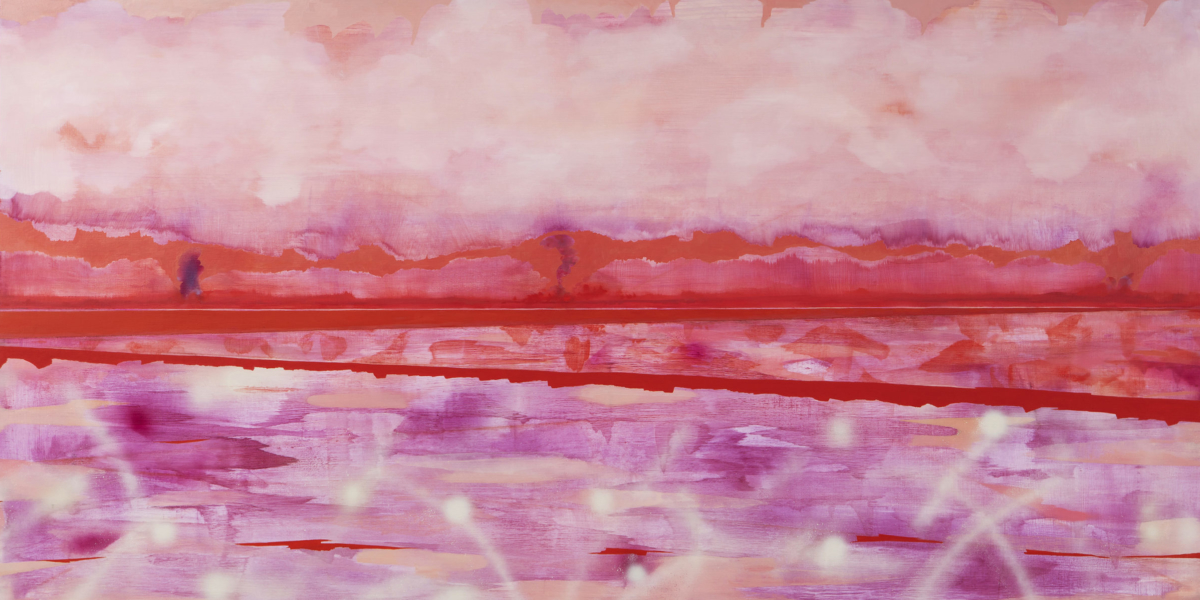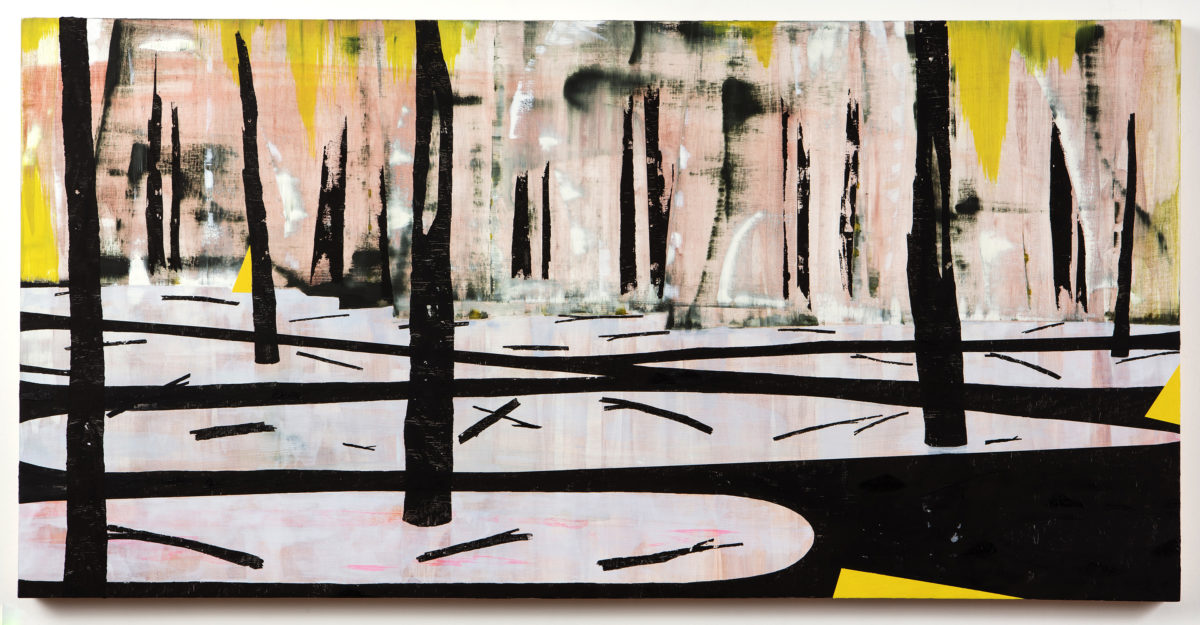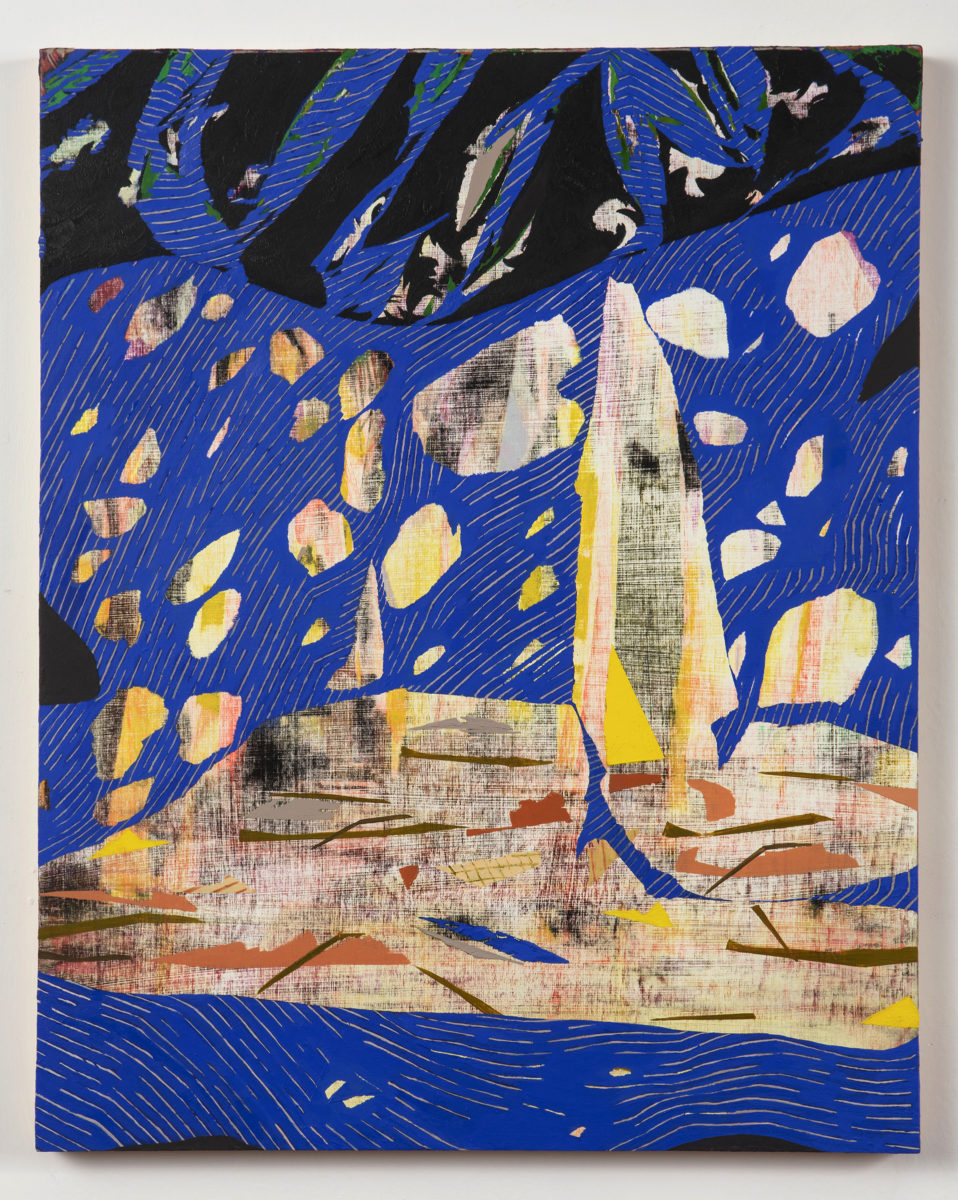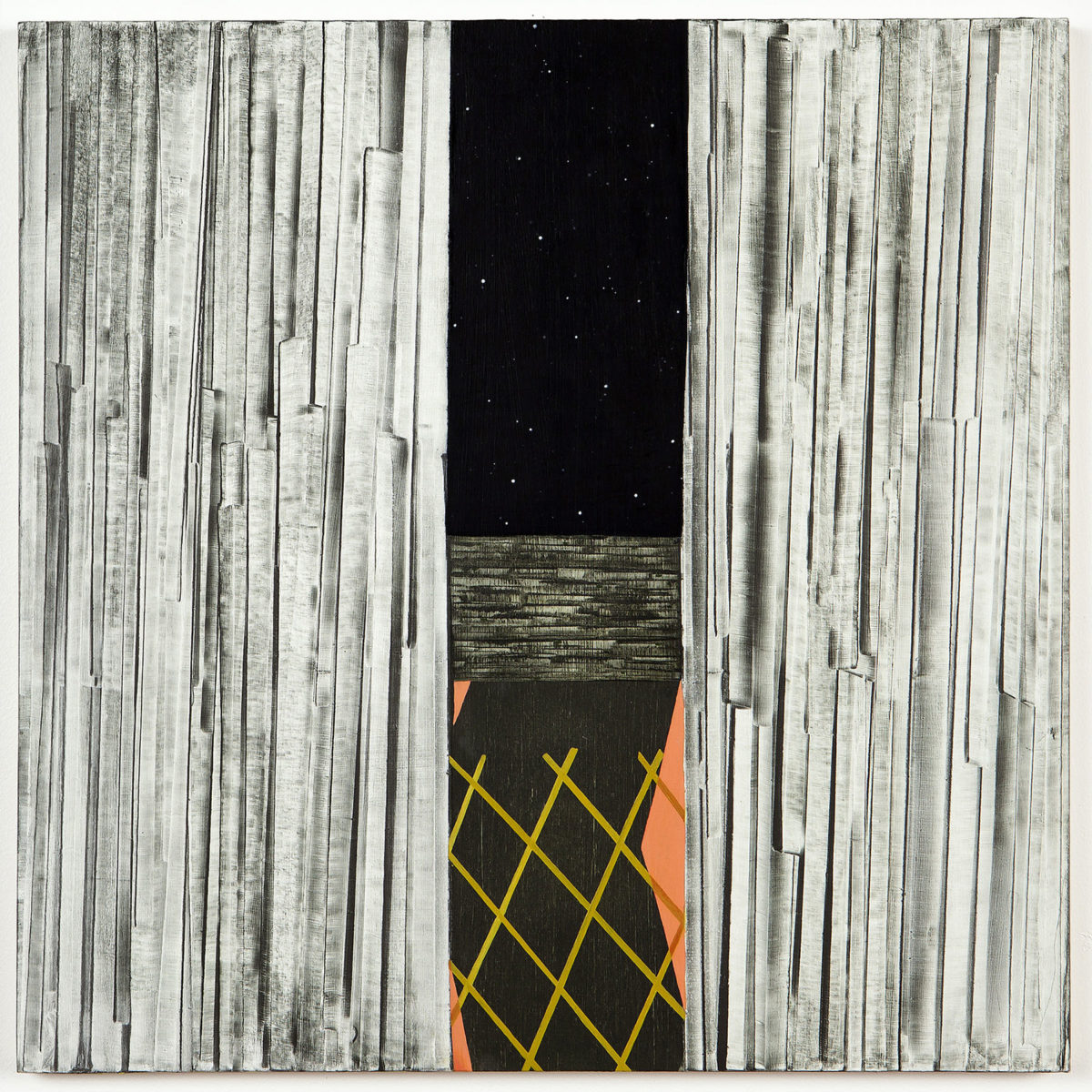
Artist Talk: Fine artist Magnolia Laurie uses landscape as a framework for her message
Thursday, October 20th, 2022
When Magnolia Laurie paints a landscape, it represents more than horizon and sky and hills.
The Franklin & Marshall College professor often uses landscape as the vehicle through which she conveys ideas about vulnerability and relationships — not only to the land, but also to each other.
Laurie visits Pennsylvania College of Art & Design on Thursday, Oct. 27 for an Artist Talk in the Atrium at 11:30. A guest of the Fine Art Department, Laurie below shares some thoughts on the impact her background has on her highly personalized work, the interplay between her practice and her teaching career, and the importance of failure in art-making.

“seeping up and in between us,” Magnolia Laurie, 2021, oil on panel
Where does your visceral tie to the land and landscape come from?
Magnolia Laurie: I often pull ideas from various fields, creating new relationships and recontextualizing them through a framework of “landscape.” I’ve been working with this framework since 2006. The land is a starting point that keeps me oriented while allowing a lot of room to explore and change from one body of work to the next. I still find new questions to be interested in. Exploring our relationships and conflicting perspectives on the land continues to feel relevant.
Some ties are also more subconscious, instinctive, and related to my personal experience. For example, I grew up in Puerto Rico and I think my love for the horizon line comes from the daily constant of looking out to where the ocean meets the sky. I use weather and climate as a means to create emotion and tension in my paintings, and some of this could be attributed to growing up on an island where hurricanes, flooding, and landslides were common. It is a humbling experience to live in a place where nature reminds you of your relative scale, again and again. But I also grew up very poor, and in many ways focusing my work on the landscape and the weather is a way to indirectly and metaphorically talk about precarious circumstances and human vulnerability.

“in the remnants of our own doing,” Magnolia Laurie, 2021, oil on panel.
You have a long resume of residencies and fellowships: What do these experiences bring to your practice?
ML: I have been fortunate to do a number of residencies over the years and each one has had a significant impact on my work. As someone who works with the idea of landscape, shifting locations always provides a lot of new material. Shifting my position quite literally gives me a new perspective from which to see and understand more about how the land is utilized or thought about.
There is also the aspect of community. I have met wonderful people at every residency. The chance to meet and talk to other artists, writers, musicians, and sometimes scientists about what they do and how they approach their work is something I’ve always valued and found inspiring. It has helped me to reconsider my own practice, try out new material, or instigate a new approach in the studio.

“listen, ‘a’ā lava moves with a sound like crockery breaking,” Magnolia Laurie, 2020, ink on paper
What does teaching bring to your practice? How does your practice influence your teaching?
ML: In my studio practice, I embrace failure to a certain degree. So much of the creative process is about testing, trying out an idea, and then learning from the results. Many of my favorite moments in my work have come from accidents, mistakes, and failed attempts at something else. These are moments that surprise me, which is something I am always searching for.
For my students, I encourage this willingness to explore and fail. I often compare this kind of failure to the trial and error of scientific experiments to the aches and pains of a dancer or an athlete training their muscles. These are starting points rather than endpoints. I try to stress that all the real work in art making is in the practice and the learning from those little failures along the way.

“built for fictions of the present,” Magnolia Laurie, 2018, oil on panel.
What are the tools with which you work most often?
ML: Studio space is essential to the making of my work. I have adapted my scale and materials to adjust to different studio spaces throughout my career, but having a space to go and unravel the ideas in is very important to the making process. Even if it is just a desk somewhere, claiming that space to be your own is so important.
Top image: smoke signals, Magnolia Laurie, 2021, oil on panel, 24 by 48 inches.
